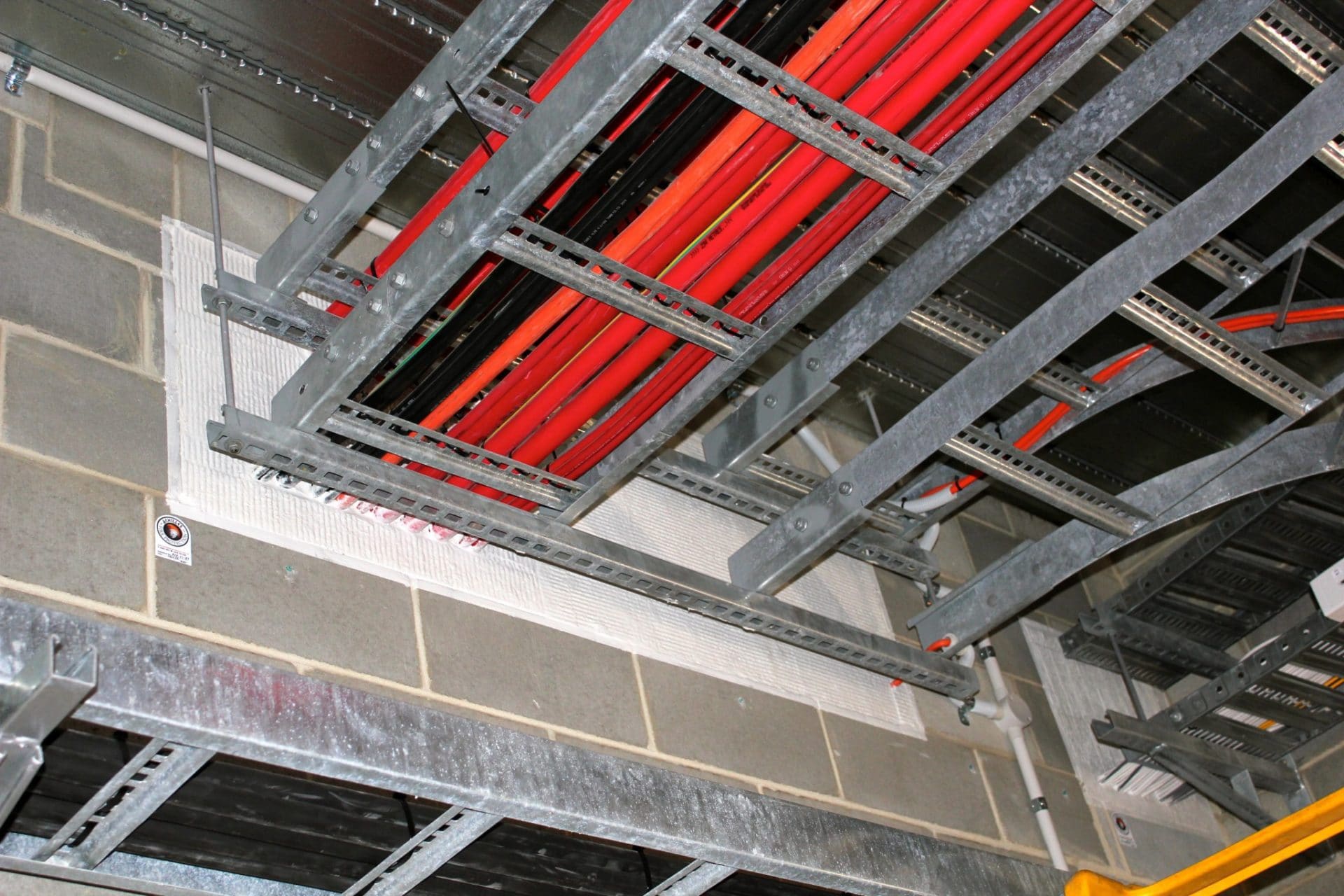Fire protection can be categorised in two ways: active and passive. Where active fire protection deals with solutions such as fire suppression systems, passive fire protection provides protection to the building structure, protecting both the lives of those in the building and those entering it to extinguish a fire. FIS technical manager Joe Cilia looks at the passive side of this life-saving requirement.
The category of passive fire protection can be further segmented into structural fire protection, that is, structural elements such as steel beams and columns, and fire protection that provides compartmentation. Wilf Butcher, CEO for the Association for Specialist Fire Protection (ASFP), said: “Fire-stopping is perhaps one of the least understood, but most commonly installed, elements of all passive fire protection systems.”
As a specialist contractor, you might be asked to provide structural fire protection to mezzanine floors by installing a fire-rated ceiling below the floor. However, it is more common to be involved with the type of products specified to create compartmentation or escape routes using partition doors and cavity barriers.
Guidance describing fire protection is outlined in Approved Document B (Fire safety) of the building regulations and also in BS 9999. Fire-rated products can be tested using BS EN1364:1 and BS 476:22. These tests will certify that a product has achieved 30, 60, 90 or 120 minutes’ fire resistance and also provide information about how the system performed at holding back the fire (integrity) and the heat (insulation). Although solid partitions can be efficient at integrity and insulation, glazed fire screens will require more specialist glass incorporating intumescent layers to provide protection.
Pressures to reduce costs can lead to assumptions about mixing individual products that have not been tested together. This is often true where fire doors are specific and individual elements such as the door leaf, frame, ironmongery and seals are procured on the assumption that they will perform.
However, the only way to ensure that products will perform together is to test them together in a laboratory or to get them assessed by a fire engineer. There are three aspects that help to ensure a fire-protective product performs over its installed lifetime: design, construction and maintenance.
Design
The designer is responsible for ensuring that the materials specifiperform. That means checking the products’ test data as well as ensuring that the element abutting the system is at least equal to, or greater than, the performance of the element being specification.
Construction
It is crucially important that systems are installed in accordance with the manufacturer’s instructions. These instructions can also specify the necessary fixings; any deviation at all from the system specification or method of build must be confirmed in writing before the work is commenced. It is often too late when the product has been installed to try to unpick things, and this can also lead to costly remediation work.
Chris Barlow, product development director at Encon, said: “Adopting the recommendations from specialist associations such as the ASFP and engaging with the supplier to ensure that the product you use is fit for purpose are important to ensure conformity.”
Maintenance
It is relatively easy to see that an intumescent strip has come away or that a door closer has failed, but it is more diffi to know that a plug socket cut into a partition or a hole cut in the wall above the ceiling or below the floor has compromised integrity. To help facility managers recognise the performance of a partition long after it has been installed, FIS and ASFP have introduced the ‘Fire performance labelling scheme’.
This simple label is stuck to the partition in both the ceiling and fl voids to highlight that the partition is fi e-rated and that cutting holes could destroy its integrity. The label also provides a quick link via QR code to relevant advice from ASFP.
Dave Bonner, managing director at Nevill Long, said: “This simple scheme clearly identified a fire-rated partition and tells anyone who is considering penetrating it what the implications are and what they need to do. The use of the sticker has the potential to save property and, importantly, lives.”
Effective fire-stopping comes down to fully understanding the requirement and the interface to ensure the correct specifi ation, as well as using competent and trained operatives who understand the method of installation required to achieve the correct fire performance. Follow this guidance – and always seek advice from experts whenever necessary – to avoid your installation coming under question at an inquest to ascertain what went wrong where a fire destroyed property, or life.


